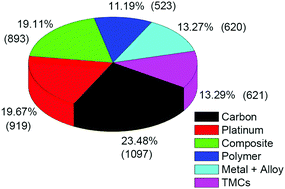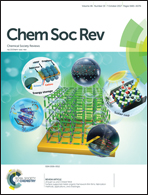Counter electrodes in dye-sensitized solar cells
Abstract
Dye-sensitized solar cells (DSSCs) are regarded as prospective solar cells for the next generation of photovoltaic technologies and have become research hotspots in the PV field. The counter electrode, as a crucial component of DSSCs, collects electrons from the external circuit and catalyzes the redox reduction in the electrolyte, which has a significant influence on the photovoltaic performance, long-term stability and cost of the devices. Solar cells, dye-sensitized solar cells, as well as the structure, principle, preparation and characterization of counter electrodes are mentioned in the introduction section. The next six sections discuss the counter electrodes based on transparency and flexibility, metals and alloys, carbon materials, conductive polymers, transition metal compounds, and hybrids, respectively. The special features and performance, advantages and disadvantages, preparation, characterization, mechanisms, important events and development histories of various counter electrodes are presented. In the eighth section, the development of counter electrodes is summarized with an outlook. This article panoramically reviews the counter electrodes in DSSCs, which is of great significance for enhancing the development levels of DSSCs and other photoelectrochemical devices.



 Please wait while we load your content...
Please wait while we load your content...